Contact
Contact comes in many different forms. Some of them will feel natural and others less so. Like most things, with the right amount of practise you will get used to each scenario.
The key ways of establishing contact when selling are:
- Face to face
- Over the phone
- During a networking event
- When socialising
There a literally thousands of approaches that you can use – each with their own twist, but all rely on the same fundamentals, the ability to listen, communicate and then listen some more.
That’s right, the more you listen, the more likely you are to make the sale. Listen to what they say, the way they say it, observe their body language, listen to the replies to your questions, listen to the intent of what they are really saying. Often the clues are in how something is said, rather than what is actually being said!

Different Contact Approaches
You may have heard of techniques like:
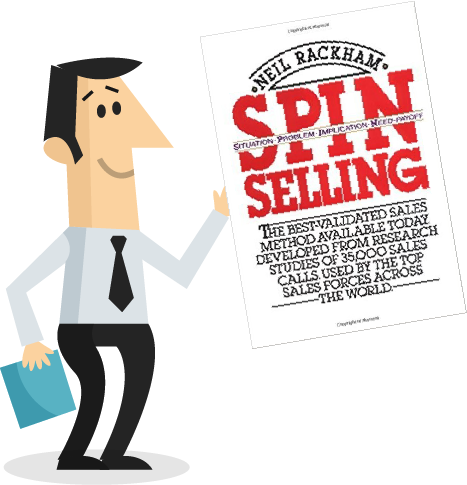
SPIN Selling
Neil Rackham is credited with documenting this technique. SPIN stands for the 4 types of questions that a salesperson should ask:
- Situation questionsHow does X work?
- Problem questionsDo you find X hard?
- Implication questionsHow does not solving X affect things?
- Need Pay-off questionsIf you could solve X would that help?
The aim of this technique is to let the prospect realise why they should buy, rather than just telling them to buy.

N.E.A.T. Selling™
This is a framework developed by The Harris Consulting Group & Sales Hacker to replace other processes.
-
Core Needs
Requires you to get deep into the “pain” and illustrate how your product/service will matter to them.
-
Economic Impact
Measuring the current impact vs impact they will see if they make the change.
-
Access to Authority
Can or will your prospect speak to the proper decision maker
-
Timeline
The moment a prospect must make a decision.
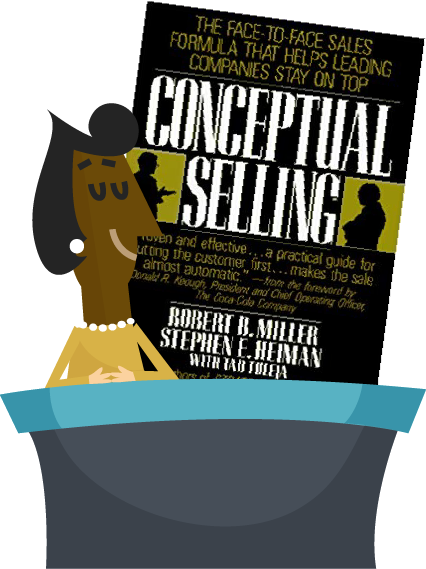
Conceptual Selling
Conceptual Selling, created by Robert Miller & Stephen Heiman, assumes that buyers do not buy a product or service. They buy on what they think your product/service will do for them – so no pitches, this is all about understanding the buyer’s concept of your product.
- Confirmation questionsConfirming the information you have.
- New information questionsDesigned to understand what their idea of what they want to achieve is.
- Attitude questionsSo that you can understand what the prospect feels about the project.
- Commitment questionsTo understand what is being invested into project.
- Basic issue questionsDesigned to raise possible issues for them to consider.
This process is all about listening and 3 stages of selling:
- Getting information
- Giving information
- Getting commitment
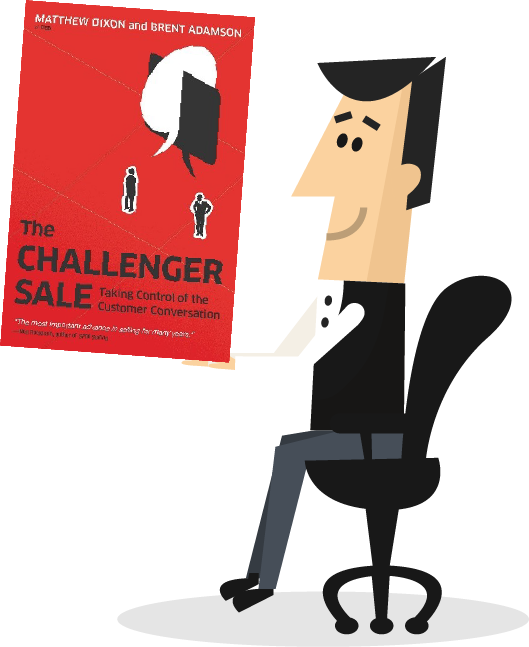
The Challenger Sale
This concept is built around one of the largest studies ever done in sales which identified what common traits top performing sales people have.
This process asserts that everyone fits into one of the following personas:
- Relationship Builders
- Creates relationships
- Classic Consultant approach
- Build Advocates internally
- Hard Workers
- Doesn’t give up easily
- Self-Motivated
- Interested in Feedback & Self Development
- Lone Wolves
- Follows own instinct
- Self-Assured
- Delivers results, but hard to manage
- Reactive Problem Solvers
- All about the details
- Is very reliable in terms of responses
- Solves all problems
- Challengers
- Thinks outside of the box
- Likes to debate and push customer
- Understands business side of a transaction
This system believes that ‘Challengers” make the best sales people because they:
- Teach prospects about new ideas, their business problems etc.
- Tailor the way they communicate to the person in front of them.
- Take control of a sale by not being afraid.
With the right pointers, everyone can become a Challenger and that they are made (not just born), through combining skills, challenging everything (not just skills) and taking the time to grow.
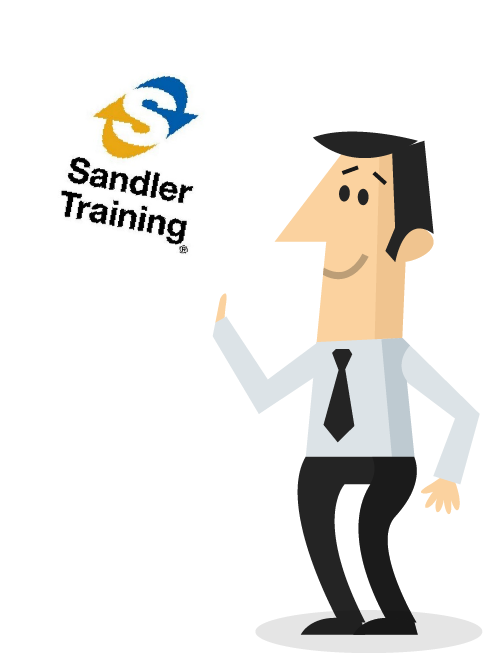
The Sandler System
This system (developed by David Sandler in 1967) is based on the psychology of human behaviour.
Translated it is about levelling the relationship – turning the pushy salesperson who traditionally gets into buyer/seller relationship into a trusted advisor with an equal adult to adult relationship.
The focus is on qualification rather than closing – understanding what may stop the sale from happening (time, budgets etc.) and dealing with them up front, so all obstacles are removed. At that point you can both focus on the real issue, which is identifying the “pain” and fixing it.
If, after running through the process, you realise you cannot truly fix the “pain”, then this process tells you to move on, don’t waste time trying to persuade the prospect to buy, just cut your losses, and move on to the next prospect because your time is one of the most valuable assets you have, so don’t waste it.
Rather than the seller convincing the buyer to buy, the idea becomes that the buyer tries to convince the seller to sell.
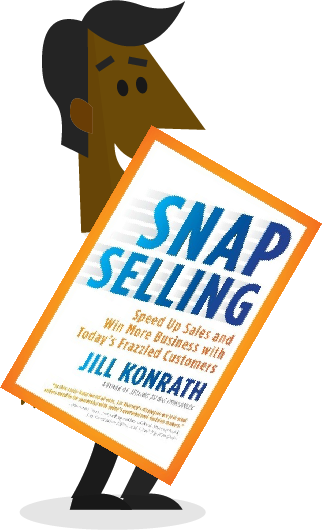
SNAP Selling
This is a technique designed to bring the sales person to connect with a prospect by understanding that there are key decisions that need to made by the prospect for a successful deal. The way to help the prospect make these decisions:
Keep it Simple
Make it easy for them to buy.Be Invaluable
Be their expert and show value.Always Align
Make them want to work with you.Raise Priorities
Understand where they are focused.
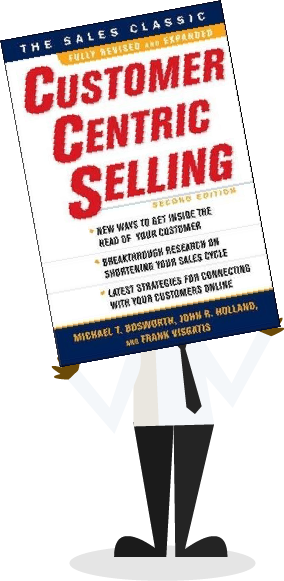
Customer Centric Selling
Similar to Sander – this methodology is about turning salespeople from selling products to becoming collaborative consultants.
The system believes there are 8 key ways to do this:
- Don’t present, just talk about issues.
- Ask relevant questions rather than giving your opinion.
- Focus on the solution – not how you get on.
- Target decision makers not users.
- Focus on making people use the solution rather than people liking the solution.
- Don’t be busy.
- Close on buyer’s timeline, not sellers.
- Empower rather than convince.
Put another way, it focuses on:
- What customers wantWho are your competitors? What is their offer and how does your product or service better them?
- What customers needUse ‘you’ and ‘your’ instead of ‘our’ and ‘we’.
- The customer’s languageForget acronyms and industry language or jargon.
- Customers fears.
Task
Drag the statement to the correct sales process:
-
The Challenger Sale
“Built around one of the largest studies ever done”.
-
Conceptual Selling
This process is all about listening and 3 stages of selling
-
NEAT
Core needs and impact form part of this process.
-
SPIN Selling
Created by Neil Rackham.
-
The Sandler System
Based on the psychology of human behaviour.
-
Customer Centric Selling
Target decision makers not users.
-
SNAP
3 key decisions that need to be made.
